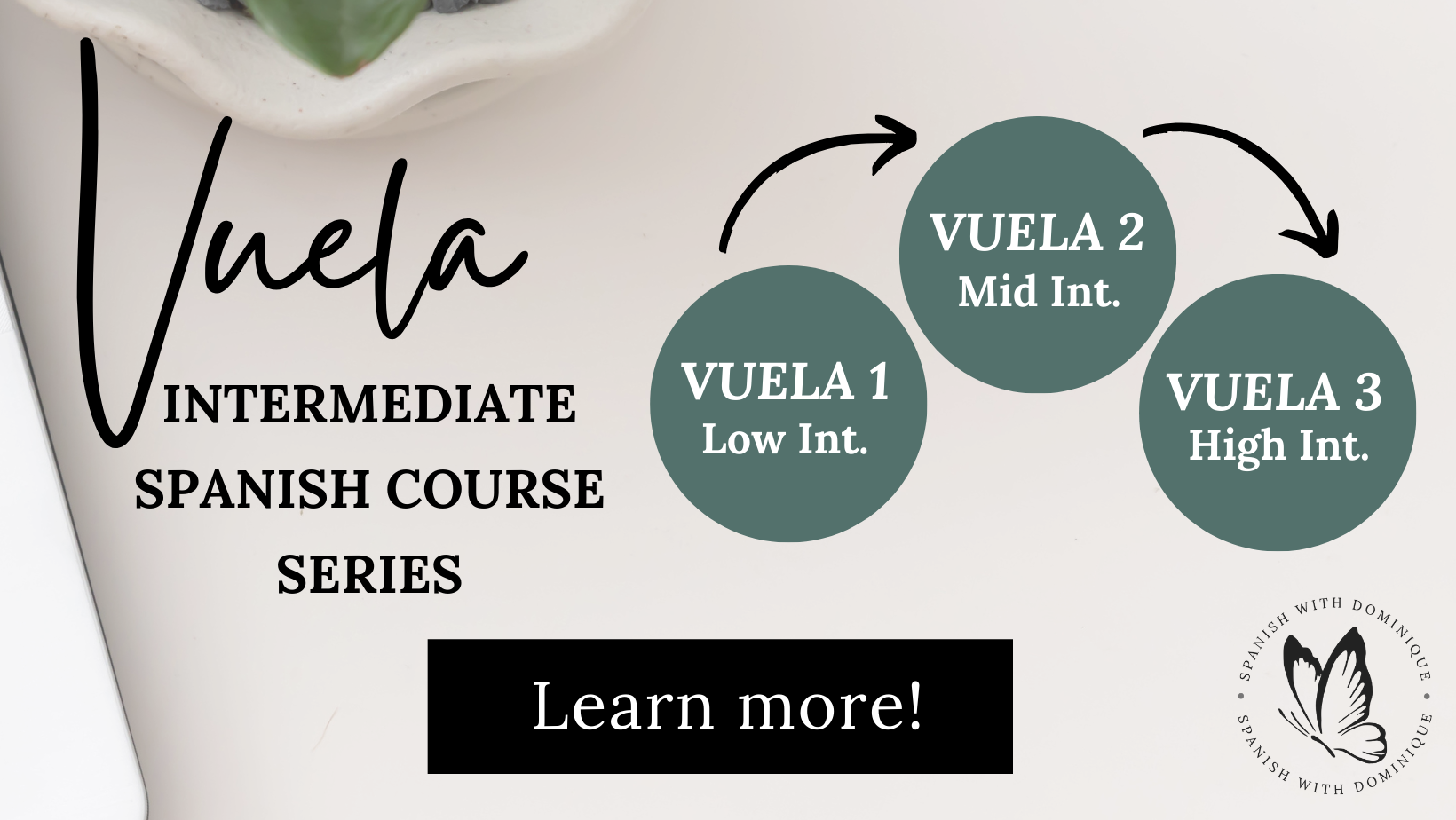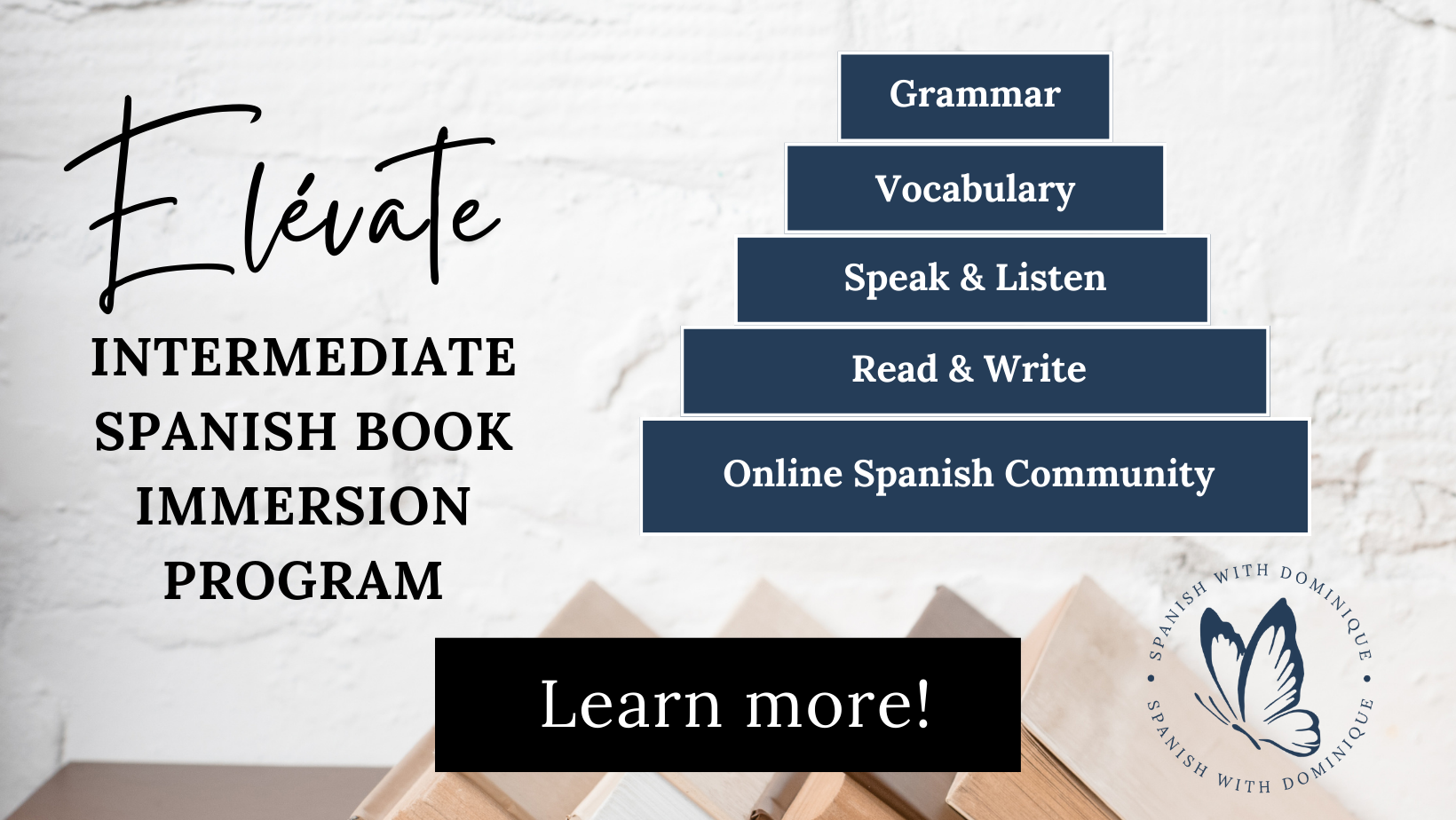What’s my Spanish level? 3 Ways to Evaluate Yourself
In this post: Wondering what your Spanish level is? Learn 3 ways to evaluate your level of Spanish fluency. Discover Spanish level tests and more.
“How do I know what my Spanish level is?”
That’s a question people ask me a lot. And for good reason.
After all, you know what you’d like to be able to do in Spanish — whether it’s to speak more comfortably with your in-laws or ask for directions on your next trip to Oaxaca, Mexico.
But what level of Spanish do you need to have to do that exactly?
Or let’s say you’re thinking about taking a course or program designed for intermediate-level Spanish learners. How do you know if you have an intermediate level?
You see, there are two problems you’ll probably run into when you try to figure out your Spanish level:
It can be difficult to find a good Spanish-level test,
Nobody can agree on (in the States at least) an consistent description of the different levels.
That’s why today’s post will help you understand some of the most common and effective ways of describing your level of Spanish — so you can choose courses and materials that are appropriate for you. You’ll also come away with two ideas for finding a Spanish-level test — one of them is super fast and easy, I promise.
After this post, you’ll have everything you need to clarify your Spanish-speaking goals, select the materials you need — and learn more quickly and efficiently.
While reading this post, consider these questions:
Why do you want to know your Spanish level? Can it help you reach your goals? Or figure out what kinds of learning experiences to seek out?
What Spanish level would you love to achieve? (If you don’t know exactly, think of a few things you’d like to do before you read on.)
What can you already do in Spanish now? What can you understand when you read or listen? What can you do conversationally?
1. Use the Common European Framework of Reference for Languages (CEFR) to understand your Spanish level.
In the US, we have few ways of describing foreign language proficiency — and that leaves room for confusion.
That’s why many international language teachers and programs use the CEFR — or the Common European Framework of Reference for Languages. It’s recognized across Europe — and in many language training programs.
In fact, if you think about what you can already do in Spanish, you can get a general idea of what your level is just by understanding the framework.
Here is a quick breakdown of each level. Do any of these sound like you in Spanish?
Basic: A1
You can understand and use familiar, everyday expressions — usually a few words at a time. Think colors, numbers, and dates. You can use very simple phrases to get a few basic, concrete needs met and share just a little bit of personal information about yourself. In conversation, you can get your general idea across very simply — if the person you’re speaking with is willing to help you out (and speak slowly).
Basic: A2
You can understand short sentences now — and the most common expressions. You can talk about shopping, family, geography, where you live and work. You can talk about everyday tasks in a simple way.
Independent B1:
You can understand the main ideas of clear, regular speech on more familiar topics like work, school, and hobbies. You can deal with most travel situations in a Spanish-speaking country. You can even write short texts about topics you’re familiar with or interested in.
Independent B2:
You are starting to be able to talk about (or read about) both abstract or concrete topics, even technical areas. You can speak spontaneously with native speakers and feel more and more fluent when you do. It’s not such a big effort for you anymore — or the person speaking with you.
Proficient C1:
You can read and understand longer, more challenging texts — articles, books even. You can speak fluently without too much searching for your words. You can use Spanish in all kinds of situations: social, academic, and professional. You can even write in an organized way on more complex subjects.
Proficient C2:
You understand most of what you hear and read with ease. You can speak fluently and very precisely. You have a certain degree of nuance in your speech, even in more complex situations.
Are you still wondering what your Spanish fluency level might be? Watch this:
For an explanation of the Common European Framework levels with visuals and actual examples of speakers at different language fluency levels, watch this excellent video.
2. Look through DELE Sample Examination Papers and Audio Materials
After reading the descriptions above, you could also try out a sample-level test in Spanish.
I suggest looking at the practice versions of the DELE exam (Diplomas de Español Como Lengua Extranjera).
Look at a few different levels of the exams — these range from A1 all the way to C2.
If a level looks easy for you, maybe you’ve already reached that level. Now, you can try a slightly higher level and see how that goes.
If there’s a level that you can understand — but you’re not really sure you’d be able to answer all the questions, that level might be a bit of a ‘reach’ for you. To improve your Spanish, you should choose language learning experiences and materials at this level.
If you get to a level and realize it’s over your head — that’s great. You can move back down and see where you feel comfortable. And you’ll have an idea of where you are now in Spanish.
But what if that sounds a little confusing…or like a lot of work?
Don’t worry, I completely understand. And I have one more thing that can help you…
3. Learn to self-evaluate your Spanish level.
If you’ve ever taken a traditional Spanish course in high school or college, you’re probably used to taking and passing tests. Or having someone else tell you what your level is.
But did you know that the research says that assessing your own progress in your language learning is the best way to become a self-directed and autonomous learner? As an adult learning Spanish on your own, that’s exactly what you’re trying to achieve.
As someone who has learned Spanish as an adult, I know the pillars of content that you have to master to achieve conversational fluency.
But even though I have moved through all levels of the CEFR and the DELE exam, I understand your goal may not be to place well on someone else’s test.
What if your goal is to feel comfortable speaking in real-life situations that matter to you? So you can chat with your neighbors in Spanish or call a restaurant to make a dinner reservation while in Mexico City, or simply to be able to converse in Spanish with your Grandpa.
So, how can you evaluate yourself? I have two easy ways you can start doing this today:
#1 Use the CEFR global scale chart to assess your language level.
Print it out and highlight phrases that describe you in whatever color you like. You can also write the month and year down next to the level that best describes you.
You can return to this in 3-6 months to see if you’re making progress and highlight new areas of growth. Keep in mind it definitely takes time and consistent practice to move up a level on this scale.
#2 Create your own Spanish assessment with your milestones.
Think of what you would like to be able to do in Spanish — and practice being very specific.
Then grab a piece of paper you can save and come back to and write down some of the specific milestones that would be meaningful for you.
For example:
Be able to book a room in a hotel in Spanish on the phone.
Feel comfortable greeting my neighbors in Spanish and asking one simple question (about their weekend, their grandkids).
Be able to listen to a Spanish-language podcast and understand the main idea — what it’s about.
Ask for ingredients for mole negro at your local mercado.
Understand your in-law's jokes 75% of the time (ok, that’s an ambitious one — but it is specific!)
Have fun checking items off this list and noting the date (and maybe even the trip) where you reached this milestone.
It’s a fun and meaningful way to track your progress in Spanish.
Your key takeaways….
If you’re wondering what your Spanish fluency level is or what an ideal level is for you, you’re asking yourself all the right questions.
Taking a little time to understand the levels in the CEFR can help you understand the steps to Spanish proficiency and where you are on that path. Reading a practice test of the DELE can also help you get a really precise idea — in case you need to learn Spanish for academic or professional reasons.
And finding ways to assess your Spanish level, set your milestones for learning, and track your progress is a rewarding and incredibly effective way to take control of your learning.
If you’re reading this, there’s something I know about you: learning Spanish as an adult is something you’re committed to.
Your commitment and the work you’re doing now to understand your level will help you improve.
And when you do, you’ll be able to see your progress clearly — because you understand your Spanish level. And because you’ll be measuring it in ways that are meaningful in your life.
More Blog Posts Handpicked Just For You!
Enjoyed this post? Here are a few more you might like.






Discover 7 must-read books for intermediate Spanish learners to boost fluency, overcome the plateau, and immerse yourself in engaging Spanish stories.